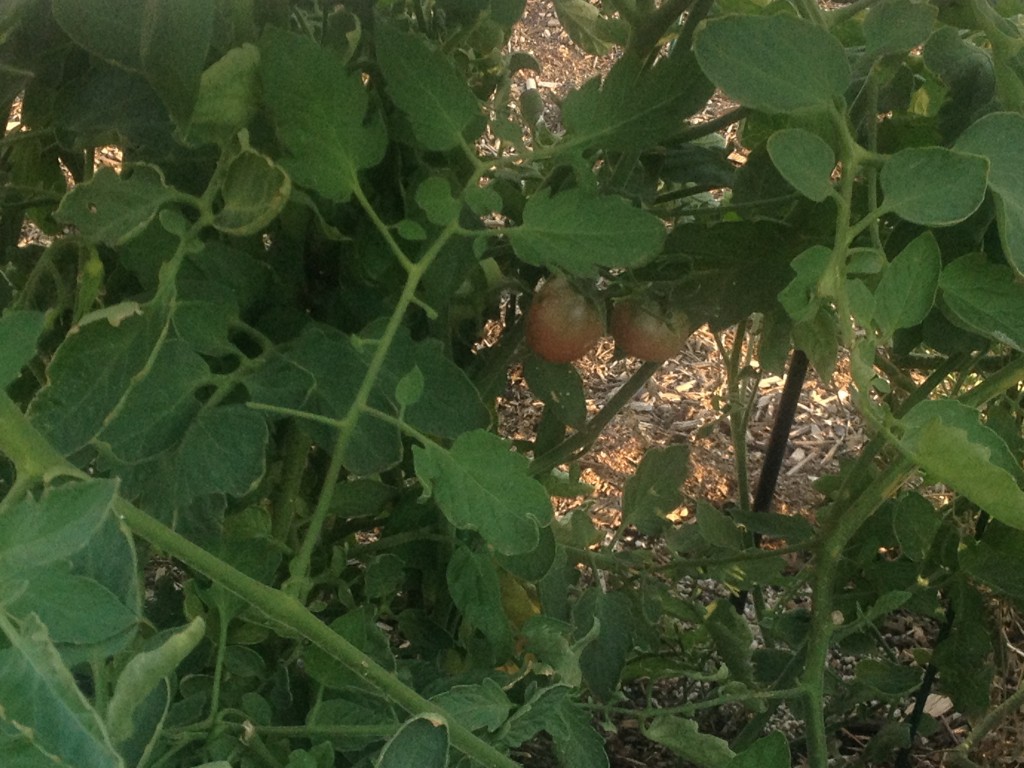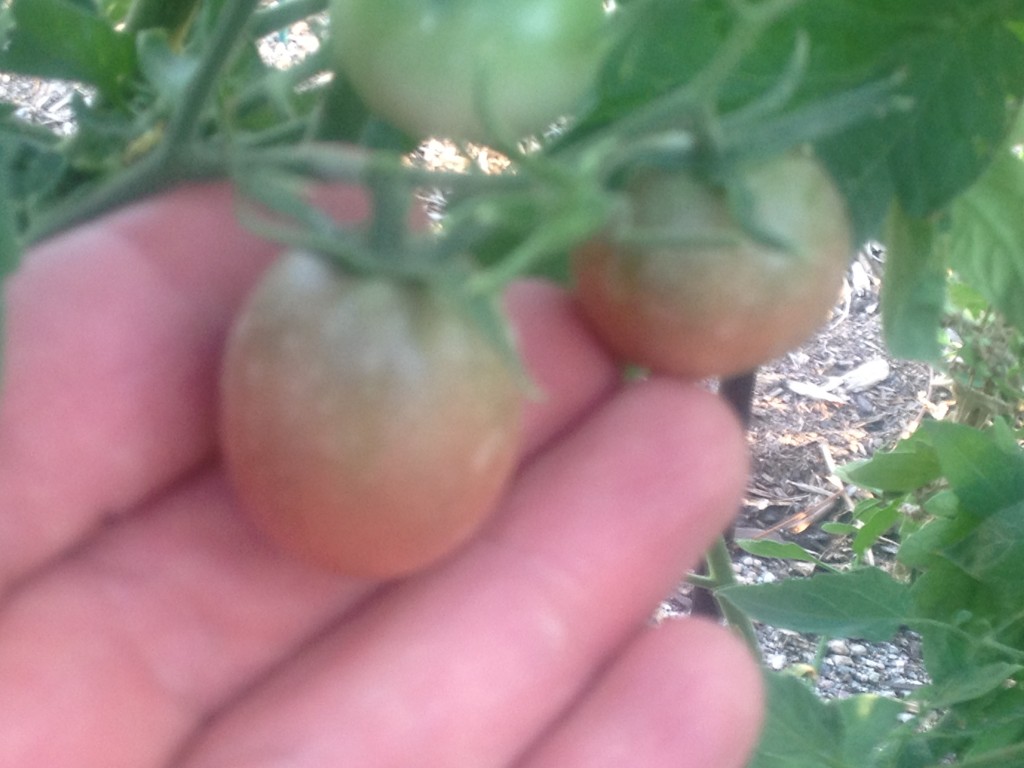It’s one of the most overwrought axioms of personal finance advice, right up there with “Create an emergency fund” and “Buy generic.” Do this one and you’ll save Gaia while keeping your belly full, the ultimate dual objectives of parsimony.
Plant a garden! What could be easier or more rewarding? A little (free) photosynthesis, a little (practically free) water, and soon you’ll be consuming nutrients as Mother Nature intended, eliminating the middlemen – Monsanto, Walmart, and all the other baleful corporations that serve only to keep the downtrodden trodden down while tightening the screws on the customers.
That wasn’t our motivation, but we succumbed, anyway. If anything, we were trying to defy Mother Nature, see if we couldn’t make something grow in a region whose annual rainfall rarely breaks 4 inches. We started ambitiously, with tomatoes and peppers, eventually adding more modest crops such as mint and basil into the mix.
That was in late May. Furthermore, we cheated. We bought the Home Depot starter kit; potted shrubs instead of seeds. Several cubic feet of soil. Plus a shovel, a wheelbarrow, and a dream.
This is hardly news to anyone who’s ever tried a garden, and we’re running the danger of being Mojave Desert-centric in our description of the events, but hear us out. For 12 weeks we watered the plants daily – 3 minutes first thing in the morning, 3 more at twilight – marveling at their steady and measurable growth. We eventually shifted to automated sprinklers, but never forgot the painstaking work involved in turning on a hose and waiting patiently, twice a day. Doing so kept us grounded, and hopeful. Then around week 10, the plants bore fruit:
There are 6 tomatoes on that bush. You might well have mistaken them for grapes. As for the peppers, or “capsicum” for some of our Commonwealth friends, may they rest in peace. Nevada, or our little slice of it, apparently being too arid or otherwise inhospitable for such feeble vegetables.
Hothouse round tomatoes cost around $2 a pound at the local supermarket. By our estimates, the tomatoes on our winsome little bush weigh less than a pound. And cost $48.11 in cash and maybe 10 hours in time. Including building the materials for and erecting our makeshift sunscreen (that slumping canopy, suspended on polyvinyl chloride pipe.) Mercifully, we have no weevils nor potato bugs in the desert. We do, however, have rabbits. And now the rabbits have the larval peppers. God know what they’re doing with them, other than laughing at our attempts to arm the perimeter with (irritating but non-toxic) mammal repellent.
To our fellow Americans (well, fellow North Americans) reaping, threshing and winnowing their way through the vast tomato fields of the San Joaquin Valley, this post’s for you. Thanks, and thanks for helping illustrate this lucid example of Adam Smith’s invisible hand in action.
Tomatoes, born on a farm. Protected from blight by wonderful, beautiful, life-enhancing pesticides. (For everyone but the pests, anyway.) Harvested by the myriad and transported to our shores at an attractive if not incomprehensibly low price. Economies of scale in full force. Joining with our millions of neighbors to indirectly farm out (hey-oh!) our tomato cultivation to the people who are really, really good at it benefits everyone. The producers make a living growing tomatoes, several orders of magnitude more efficiently than we could do it. The consumers don’t have to curse the elements and pray for rain while their tomatoes contemplate growing.
The garden was, and is, a vanity project. Alright, that’s not fair: it’s a hobby. And like most if not all hobbies, it makes zero economic sense. It’s not supposed to, and it never was. Your stamp collection isn’t a professional endeavor, nor is your fondness for working on cars. (If it was, it wouldn’t be a hobby and you’d be a technician.) If we were to have paid ourselves minimum wage while tilling the fields on our way to and from our air-conditioned home offices, and then sold our produce at an appropriate markup at the local farmer’s market, those tomatoes would go for about $98 a pound.
Wagyu beef, the authentic Honshu stuff, sells for $35 a pound.
The point to be made here is that trading pennies for hours is a moron’s game. At the very least, it’s a moron’s game if you think you’re being fiscally prudent by playing it. The gains from our tomato-farming enterprise weren’t illusory, but they were largely psychological. We learned we can grow edible food, armed with only our implements, our guile and the head start of fully developed shrubs. We justified being out in the sun doing something other than cardiovascular exercise, yoga, or lounging by the pool. And during our lonely hours tending to our nano-orchard, we had time to contemplate our and our tomatoes’ place in the universe. Made the first draft easy to write, and half a revision later, here we are.





